Analysis
artnet News’ Top 10 Most Expensive Living German Artists
Who are the most expensive living German artists? We crunched the auction data.

Who are the most expensive living German artists? We crunched the auction data.

Alexander Forbes


Gerhard Richter
Photo: Hans Peter Schaefer via Wikimedia Commons
In the second installment of our series of the world’s most expensive living artists, we focus on the Germans. Artists from the country have seen unprecedented success in recent years. And high-flying auction results have been spread relatively evenly across media, if not between the sexes.
Perhaps most interestingly, however, all of the Germans in our top 10 achieved their best prices during or after the great recession of 2008. The country’s penchant for stringent conceptualism and a highly art historical approach likely proves a safe bet for value retention regardless of economic conditions. Looking forward, however, it also likely means we haven’t even begun to hit the peak of where the German market could go.

Gerhard Richter, Domplatz, Mailand (Cathedral Square, Milan) (1968)
1. Gerhard Richter
Richter’s dominance of the market for German art is almost unthinkable. Scrolling a list of the top 500 results ever achieved by living artists from the country, one would be forgiven for missing the few other names that appear. Then again, the artist did near singlehandedly revolutionize the medium of painting in Europe in the postwar period, attacking both fuzzy figuration and squeegeed abstraction with equal alacrity.
Richter’s paintings hold the first 53 spots on artnet’s ranking of top achieving German lots, 33 of which achieved prices over $10 million. He’s the only living German artist to have passed that eight-figure mark. Richter’s 1968 canvas Domplatz, Mailand (Cathedral Square, Milan) holds the top place, however. It sold for $37,125,000 (all prices include buyer’s premium) at Sotheby’s May 2013 sale of contemporary art.
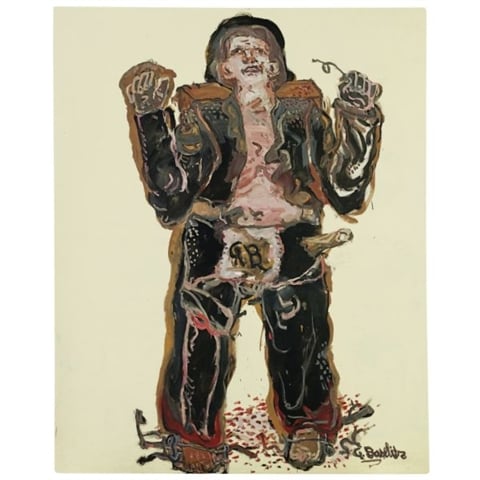
Georg Baselitz, Spekulatius (1964)
2. Georg Baselitz
Richter’s contemporary (and sometimes rival), Baselitz displays a more interdisciplinary oeuvre than his more lucrative companion. Baselitz is best known for his sexualized portraits which often see their subjects turned upside down, as well as rough-hewn sculptures, which he carves with a chain saw directly into massive tree trunks. Lately, however, he’s been nearly as famous for his misogyny, telling Der Spiegel in 2013 that women simply can’t paint. His top auction result was for Spekulatius (1964), which sold for £3,233,250 ($5,195,645) at Sotheby’s London in June 2011.
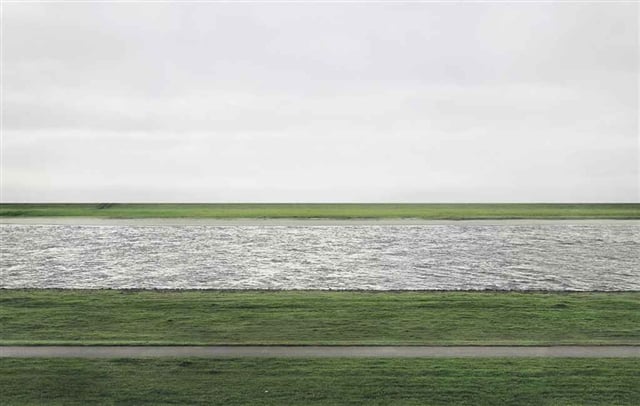
Andreas Gursky, Rhein II (1999)
3. Andreas Gursky
Despite painting’s firm grip on the hearts (and wallets) of most collectors, Dusseldorf-based Gursky has managed to grab unprecedented market weight for a photographer. Not only did the $4,338,500 result for his 1999 work Rhein II make him the third most expensive living German artist, but it also topped the all-time record for the medium of photography as a whole. Like much of Gursky’s oeuvre, the work taps into the German informel tradition through its use of geometric patterns—in this case, grass, a small path, the Rhine River, the far river bank, and the sky—without at all obscuring its subject.
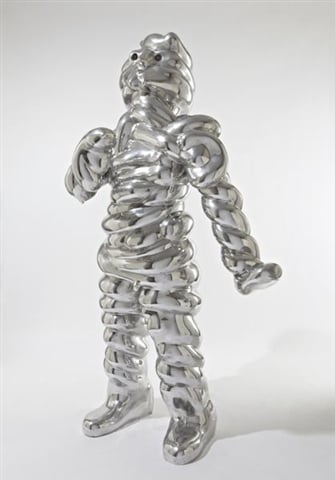
Thomas Schütte, Grosse Geist No. 16 (2000)
4. Thomas Schütte
Not far behind Gursky, Schütte’s over eight-foot-tall aluminum sculpture Grosse Geist No. 16 (2000) made $4,114,500 at what was then Phillips de Pury’s November 2010 New York sale, putting him in 4th place on our ranking. The work is one of three casts, one each having also been created in steel and polished bronze. A student of Gerhard Richter, Schütte’s practice runs the gamut from small works on paper to massive sculptural installations and monuments.

Anselm Kiefer, Dem unbekannten Maler (To the unknown painter) (1983)
5. Anselm Kiefer
Out of the entire top 10, Kiefer’s work deals perhaps most directly with his home country’s dark past. Born just months before the end of the Second World War, his practice delves deeply into the postwar consciousness and attempts to reckon with horrors committed by his parents’ generation. Yet, surprisingly, he’s one of only two artists in our list who no longer lives in Germany, having opted for life in Paris instead. Topping Kiefer’s auction history is Dem unbekannten Maler (To the unknown painter) (1983), which sold for $3,554,500 at Christie’s New York’s May 2011 evening sale of postwar and contemporary art. The painting is one of three of the same name, which Kiefer painted between 1982 and 1983. Its acrylic and shellac counterpart sold for £366,400 ($678,518) at Sotheby’s London in June 2006, while the corresponding watercolor was sold at the house’s New York locale in 1990 for $77,000.
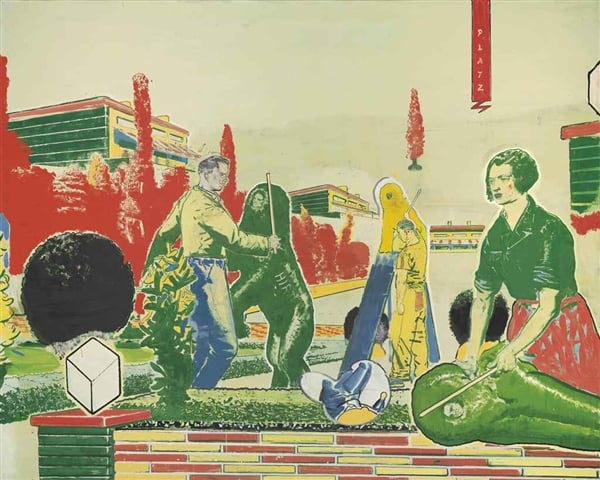
Neo Rauch, Platz (Square) (2000)
6. Neo Rauch
The market for Neo Rauch hit a new peak just this past February at Christie’s London with Platz (Square) (2000) grabbing £1,058,500 ($1,761,231). The work, which typifies Rauch’s mix of Socialist Realist and Surrealist tropes, was purchased from a 2000 show at Berlin and Leipzig’s Eigen+Art, which has long championed the artist’s work. Tip: If you happen to be near his hometown of Aschersleben, check out Rauch’s recently created Grafikstiftung (print foundation) in which he’s placing one edition of every one of his prints.
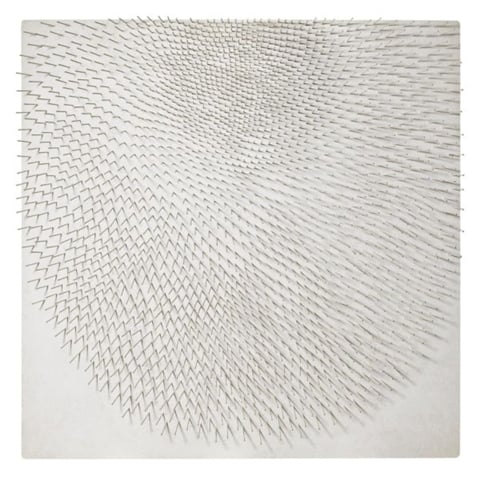
Günther Uecker, Haar der Nymphen (1964)
7. Günther Uecker
The only member of the Zero Group on our list, the market for Dusseldorf-based Uecker’s early work has seen such an upsurge of late that the artist stepped in to take more control over where works from the ’50s and ’60s are headed (at least those out of his still-notable reserves). His 1964 work Haar der Nymphen, sold in February 2010 at Sotheby’s London for £825,250 ($1,295,119). The piece is exemplary of Uecker’s most famous series of works in which he uses hundreds of nails to form abstract, often swirling compositions on panels.
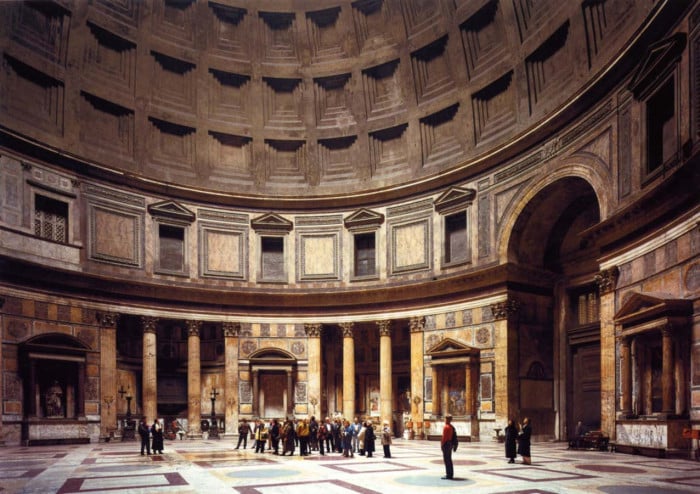
Thomas Struth, Pantheon, Rome (1990)
8. Thomas Struth
The second photographer to make our list, Struth has recently been noted for his intricately detailed photographs of technology. It’s his early works, reminiscent of the deadpan look of his teachers Bernd and Hilla Becher that have most tickled the market’s fancy, however. His top lot, Pantheon, Rome was shot in 1990 and printed in 1992. It sold for £818,500 ($1,254,790) at Sotheby’s London in June 2013. The work is notable for its soft, painterly focus and minimal contrast, the latter of which remains a hallmark of Struth’s technique to this day.
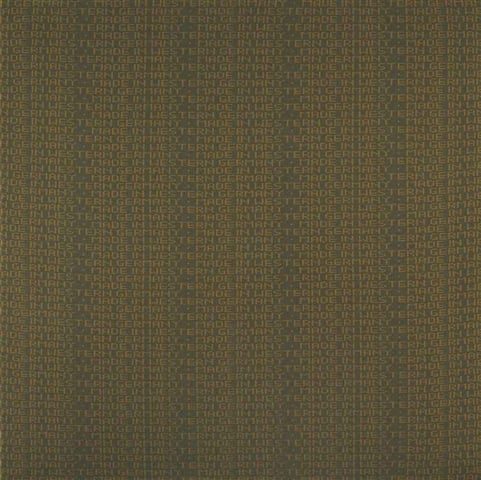
Rosemarie Trockel, O.T. (Made in Western Germany) (1987)
9. Rosemarie Trockel
No doubt pushed along by the New Museum’s major retrospective of Trockel’s work in fall of 2012, the only female artist on our list has seen a steady uptick in her market over recent years. This February, as part of a swath of heady sales during the London auctions, Trockel’s O.T. (Made in Western Germany) (1987) sold for £722,500 ($1,189,692). The work had previously sold at Art Basel 2012 for a reported $1 million.
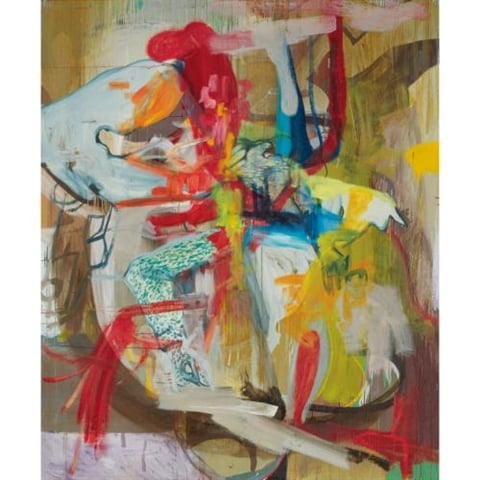
Albert Oehlen, Untitled (1994)
10. Albert Oehlen
A list of pricey German contemporary art wouldn’t be complete without a member of the Neue Wilde who brought the country’s painting scene back on track in the 1980s. A close associate of the late Martin Kippenberger, Oehlen takes a more process-oriented approach in his wildly gestural abstract canvases. At Sotheby’s New York in May 2012, a rare to market untitled painting of Oehlen’s from 1994 shot past its high estimate of $500,000 to make $722,500.